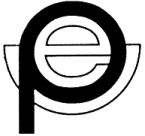

UNION OF NATIONAL EUROPEAN
PAEDIATRIC
SOCIETIES AND ASSOCIATIONS
|
|
Demography of Paediatric Primary Care (PPC) in Europe.
Dear colleagues,
Is the aim of this study to defme the organisation of
paediatric primary care (PPC) in 41 European countries.
During a workshop of UNEPSA held in 1997 in Wroclaw the Presidents of 21 National
Paediatric Societies in Europe reported on the structure of PPC in their countries.
The total number of paediatricians ranged from 300 to 10,000 per country, and the
number of paediatricians per child population was between 1/600 and 1/3,000. Thus, we
estimate a total of 90,000 - 120,000 paediatricians working in Europe. Paediatric care
within countries varied according to the structure of society (urban or rural), to
geographical factors, socio-economic backgrounds and to health policy decisions. In all of
the countries, both, paediatricians and family doctors provided paediatric primary care.
Three patterns of PPC esere found in Europe:
| 1. | PPC was provided for more than approximately 75% of children by paediatricians in one third of the countries (e.g. Ukraine and other countries from Eastern Europe). |
| 2. | In another third of countries (e.g. Germany, Austria and other central European countries) PPC was offered both by paediatricians and general practitioners (GP) to approximately half the child population each. |
| 3. | In the remaining third of countries (e.g. United Kingdom, the Netherlands and Scandinavia) children esere seen at the primary care level by general practitioners or family doctors. |
In addition to the primary, secondary and tertiary care
paediatrician, we identified another type of paediatrician, the community
paediatrician, who is devotes for the comprehensive understanding, and recognition,
prevention and treatment of community related health problems.
In summary, primary paediatric care in Europe is performed according to three
different systems, the paediatric system, the combined system and the family doctor or GP
system. These national idiosyncrasies concerning paediatric care in Europe need to be
further studied to learn from one another.
We suggest that the representatives of National Paediatric Societies and of European
Paediatric Subspecialties should dosely co-operate in order to achieve both a high quality
of paediatric care for healthy and sick children and a high standard of training for
paediatricians throughout Europe.
The Empowerment of paediatric professional societies will improve the impact of the
profession on policy affecting the well being of the child.
Efforts should be made to include paediatricians in decision-making processes at the
local, national and European levels.
Definitions:
| 1. | We define a paediatrician as a physician who finished his formal training for paediatrics approved by the local health authorities or academic bodies in the country (either after undergraduates or as postgraduate's education training). |
| 2. | A primary care paediatrician is defined as a type of paediatrician who offers curative and preventive services for acute and chronic problems in out-patient or ambulatory settings like dispensaries, primary care clinics, health centres, or in private practices. |
| 3. | Paediatricians and primary care paediatricians may work part-time or full-time. |
| 4. | We define the primary care system for children according to the proportion of the country's children aged less than 15 years seen by either paediatricians or family physicians/general practitioners: |
| 4.1. | The paediatric system has more than 75% of children under the care of paediatricians, |
| 4.2. | The combined system has both paediatricians and GPs offering primary care to almost equal numbers of children (+/- 25%), |
| 4.3. | and the general practitioner/family doctor system has more than 75% children seen by family physicians/GPs. |
| 5. | We define a community paediatrician as a paediatrician who devotes to the comprehensive recognition and understanding, prevention and treatment of community related health problems such as child protection, children in need, behaviour problems, teenager approach, growth and developmental assessment, school medicine, etc. |
Enclosed you will find our mini-questionnaire
(MINIQ) which we would kindly ask you to fill in and return through Fax or e-mail.
If you do not feel to be the right person to answer the questions for your
country, please, hand the MINI-Q to the person you estimate to be the most appropriate.
So far we have received the data of 24 nations. You can get an insight roto you previous
data (if any). Please revise, add, and complete your data the regarding the definitions.
Thanking you vety much for your co-operation.
Yours Sincerely
Manuel Katz
Secretary General of UNEPSA, August 1999
Proposal for
the UNEPSA web site and UNEPSA Newsletters (later v.s. EPA web site) | UNEPSA (EPA) missions and aims | Contacts,
UNEPSA Council |
Constitution of UNEPSA | Draft of EPA
(European Paediatric Association) | National Paediatric Societies
in Europe | Paediatric Subspeciality Societies |
Minutes of the UNEPSA General Assembly, 13th and 14th
August 1988 | Demography of Paediatric Primary Care (PPC) in
Europe